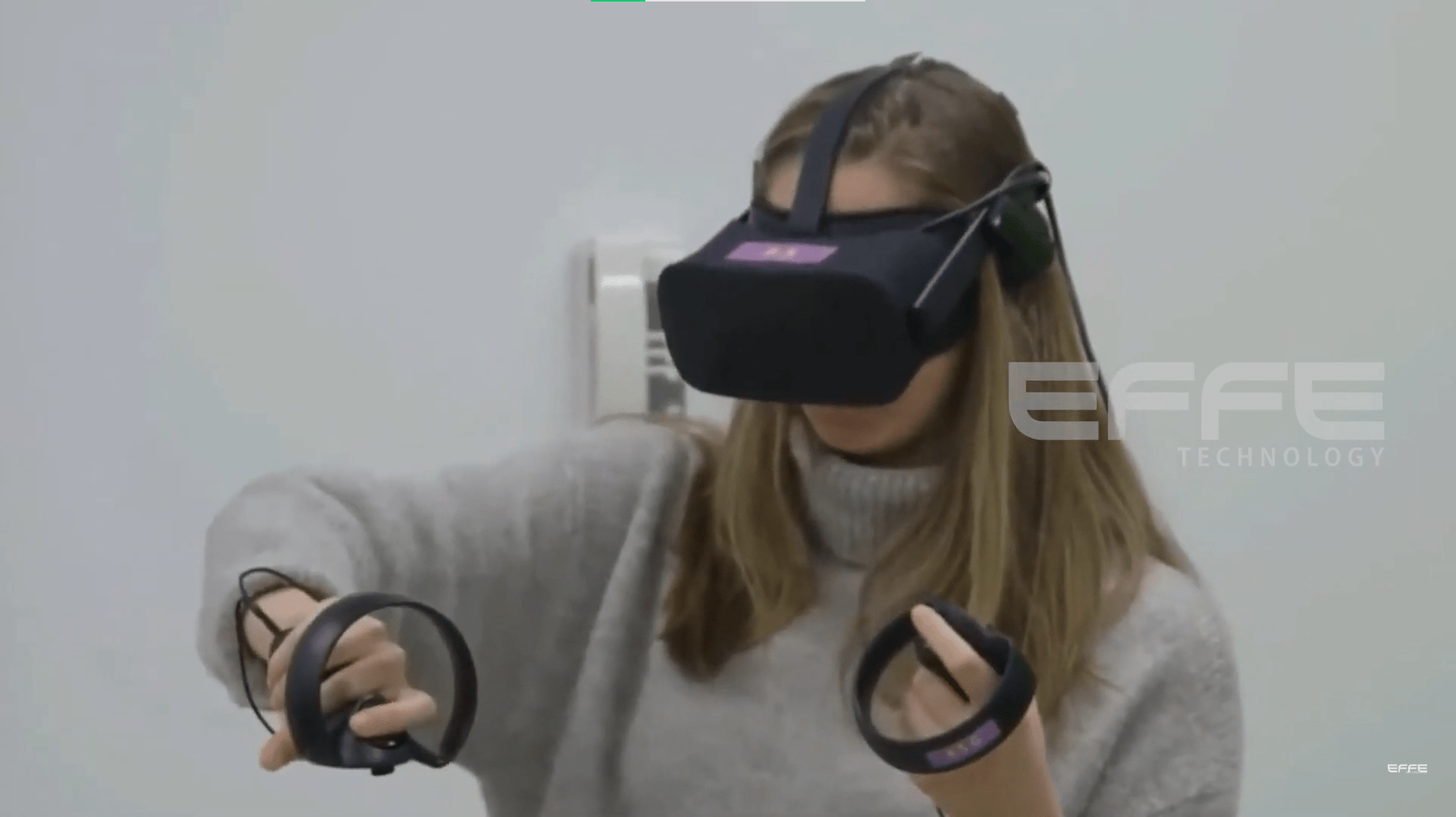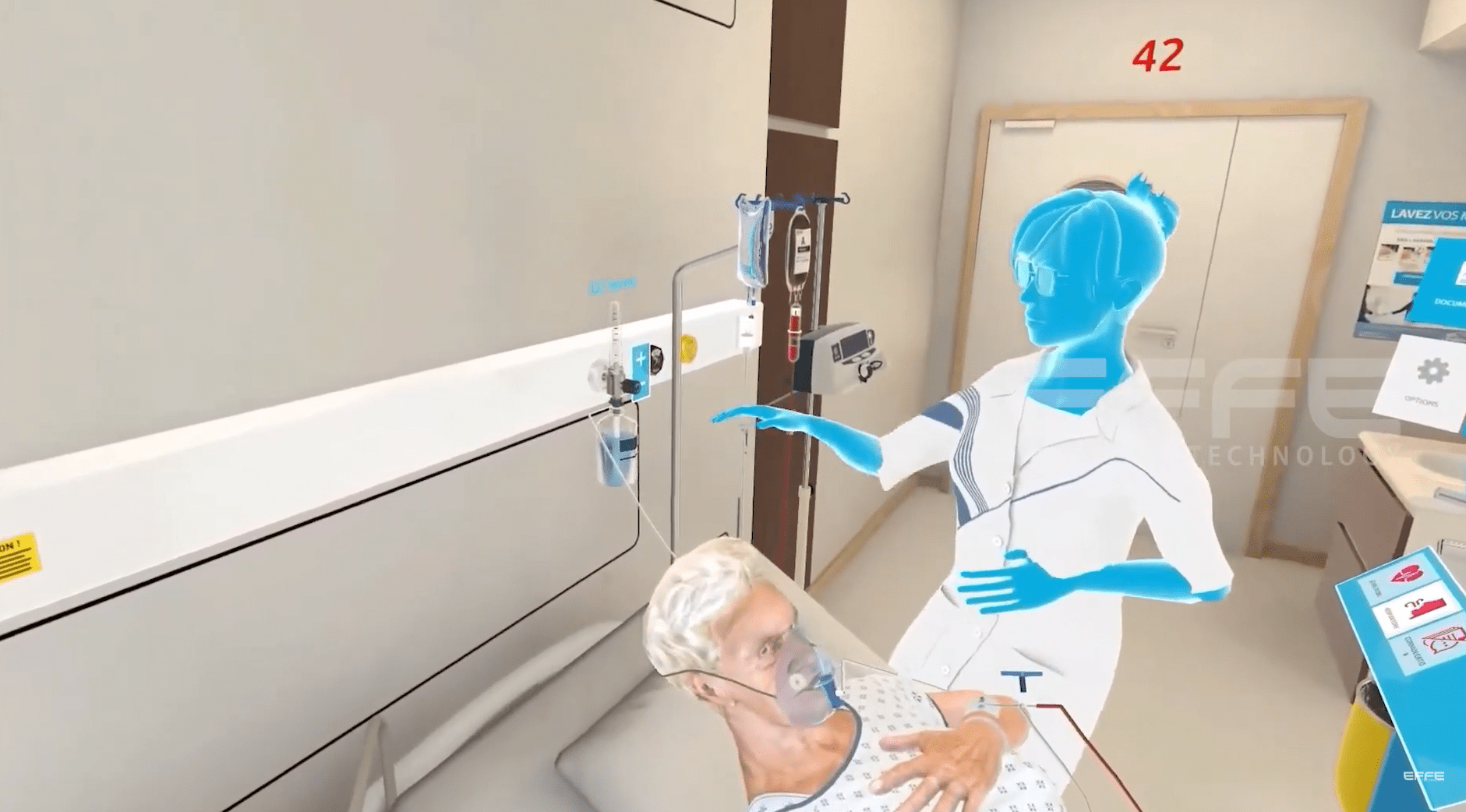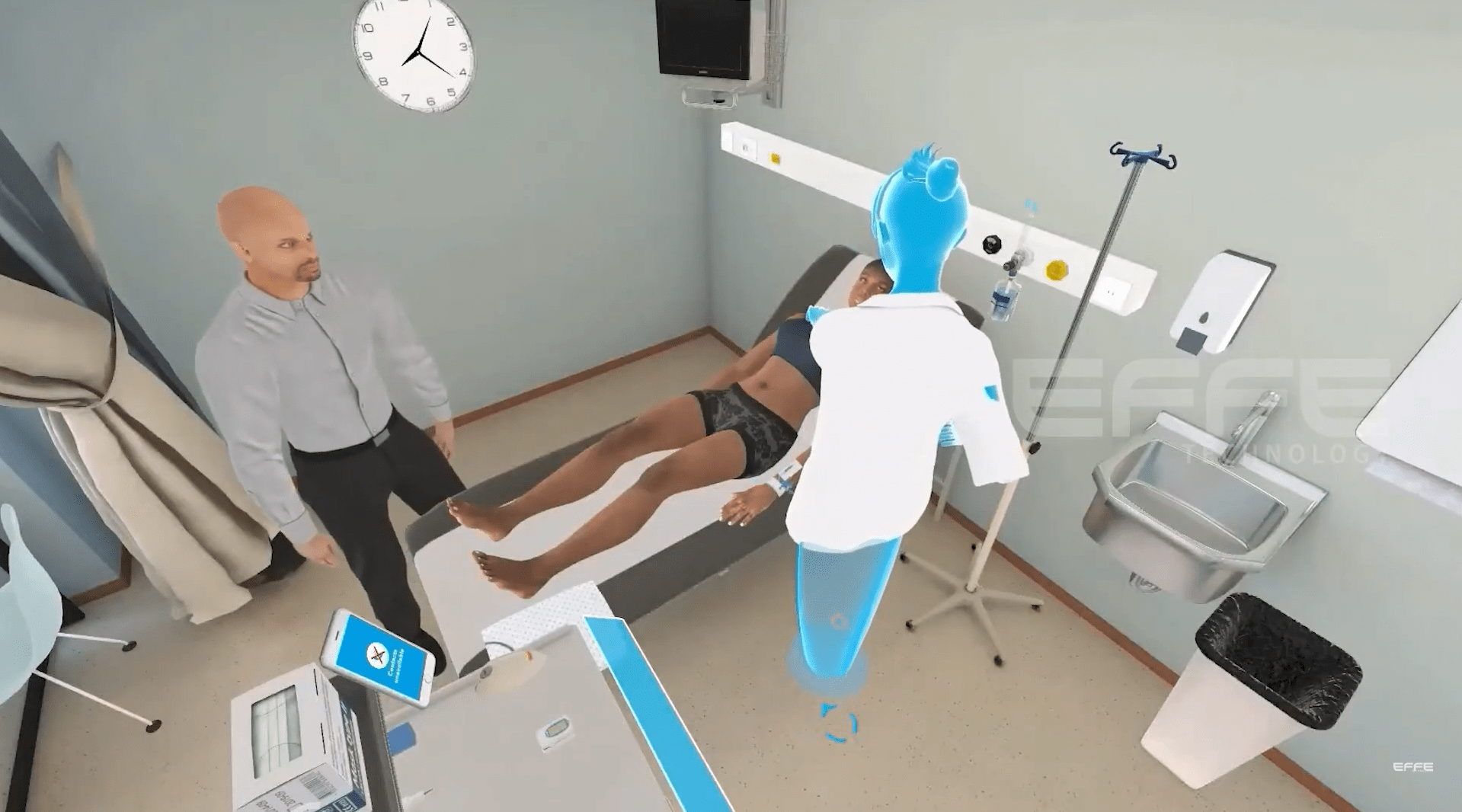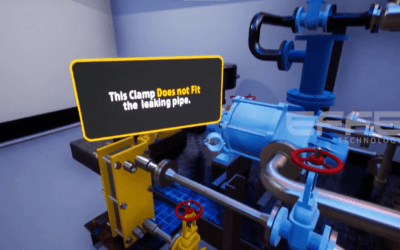Why is Virtual Reality Important for EFFE Technology?
EFFE Technology identified the revolutionary potential of Virtual Reality in medical field in a continually evolving healthcare scenario. VR services offer a novel technique for improving medical training, diagnosis, treatment, rehabilitation, and counseling in the healthcare industry. EFFE Technology saw a potential to address significant challenges in the healthcare industry with virtual reality in the medical profession, altering how medical practitioners and individuals interact with healthcare solutions.
Specification and Compatibility
Efficiency and precision were critical in EFFE Technology’s virtual reality in medical field endeavor. Our team ensured that our VR solutions were compatible with a wide range of devices and platforms, allowing for smooth integration into existing healthcare systems. We developed our VR applications to function with a variety of headsets, making them more accessible to a wider audience. This commitment to seamless integration and accessibility underscores our dedication to revolutionizing the application of virtual reality in the medical field.

The Project
What We Did:
EFFE Technology is at the forefront of utilizing virtual reality in the medical field. We’ve pioneered immersive VR medical training programmes that enable medical professionals to vividly visualize and comprehend the complexities of the human body. Moreover, we’ve meticulously designed VR simulations that empower patients to gain a comprehensive understanding of their diagnoses, explore treatment alternatives, and grasp the human body’s response to various procedures.
Project Requirements:
The project necessitated substantial research, collaboration with medical specialists, and the creation of realistic VR simulations of the human body. We had to assure user-friendly interfaces, exact anatomical accuracy, and a secure data-sharing architecture for medical education and patient interaction.
Our Solution:
EFFE Technology has successfully supplied a comprehensive suite of virtual reality in medical field, providing medical professionals with sophisticated training tools and allowing patients to make educated healthcare decisions. Our virtual reality apps add a new perspective to comprehending the human body, assisting in diagnosis, treatment, rehabilitation, and counseling. This innovative use of virtual reality in the medical field marks a significant step forward in enhancing healthcare education and patient care.
Our process:
Step 1: Begin the Project
To provide the groundwork for our VR healthcare project, we established defined objectives and identified important stakeholders.
Step 2: Conduct Extensive Research
Thorough research, including interviews and data collection, provided important insights into the success of our initiative.
Step 3: Organising the Story
Our case study was painstakingly organised, with an Introduction, Problem Statement, Solutions, Results, and Conclusion.
Step 4: Narrative Development
Our narrative was brief but intriguing, with a logical flow from one section to the next.
Step 5: Introduce yourself
We discussed the critical importance of virtual reality in healthcare and our contributions to this transformative industry.
Step 6: Compatibility and Specifications
We emphasised the technical features of our VR systems, as well as their broad compatibility for easy adoption.
Step 7: Project Specifics
We detailed our objectives, needs, and solutions as we broke down the project.
Step 8: Finally,
We summarised key lessons, emphasising our effect on healthcare and our dedication to continuous innovation.
Step 9: Revision and Improvement
A thorough examination guaranteed consistency, clarity, and accuracy.
Step 10: Formatting and Visual Enhancements
We used images to increase interaction and optimised the formatting for readability.
Step 11: Obtaining Approval
The draught was approved by stakeholders, who provided helpful feedback.
Step 12: Finishing and Publishing
We refined the case study and made it available online in preparation for publication.
Step 13: Encouraging Success
We actively pushed the case study via numerous platforms, allowing us to share our transformative experience with a larger audience. Feel free to visit our partner site for additional resources and information.

Conclusion:
EFFE Technology’s innovative virtual reality in medical field has altered healthcare education and patient care. By utilizing VR’s unique properties in the medical area, we have enabled medical practitioners and patients to interact with healthcare information in a more immersive and natural manner, ultimately improving healthcare outcomes and patient pleasure. Our commitment to innovation continues as we look for new ways to influence the future of healthcare with virtual reality technology..Explore further about the range of services we offer.



